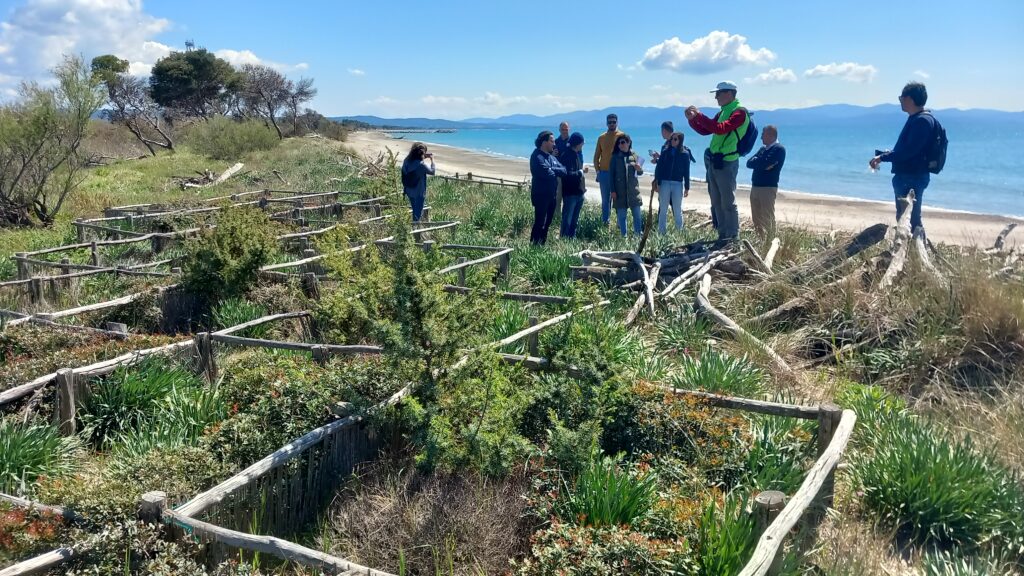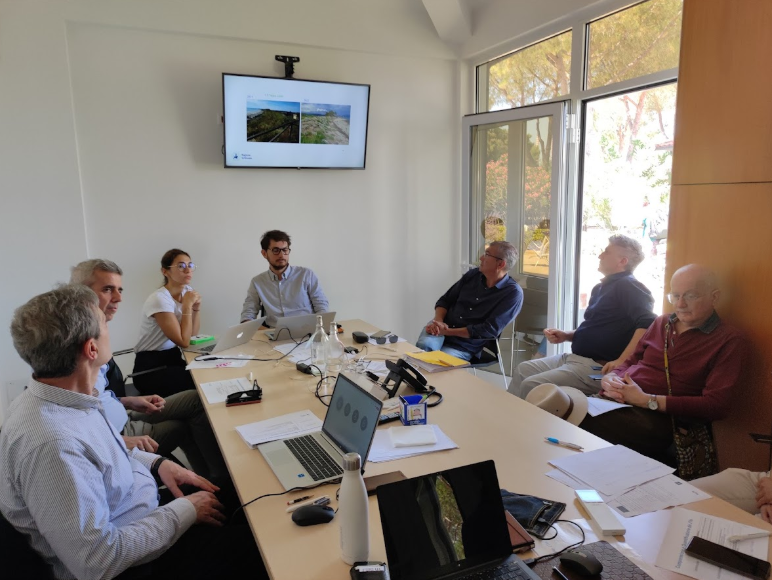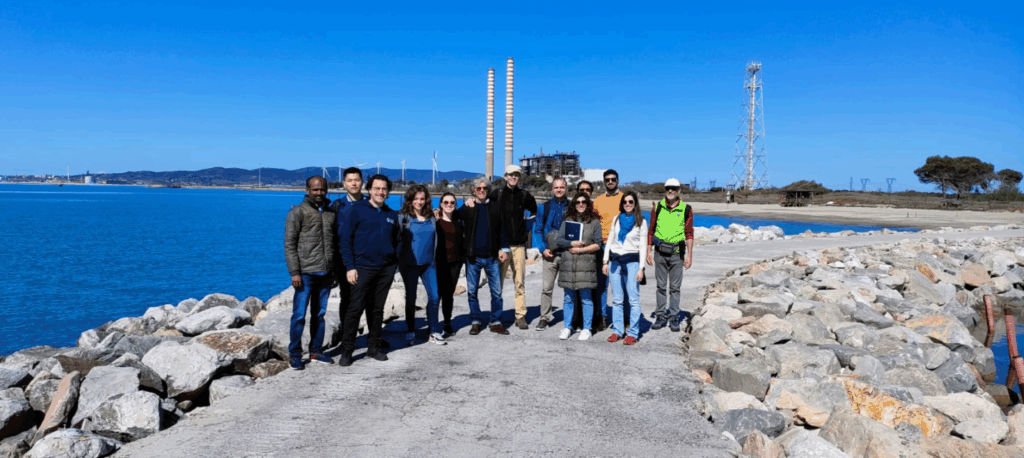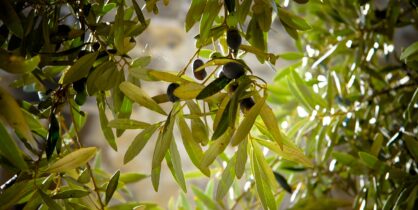Addressing Coastal Erosion in Tuscany
Climate threats endanger Tuscany’s Val di Cornia, but nature-based solutions and community efforts offer hope for resilience.
The Val di Cornia’s coastal plain, with its delicate dunes and marshlands, is increasingly vulnerable to climate change, a challenge that Luca Sbrilli, a geologist and former president of Parchi Val di Cornia, has been tackling for decades.
Sbrilli explains that the region is already grappling with land subsidence and seawater intrusion creeping several kilometres inland. “Despite the modest height of the current dune system, it remains the final natural defence holding back the sea from swallowing the coastal plain,” he warns. But that fragile shield is under growing pressure. Violent storms – like those that battered the coast in 2008 and 2018 – have chewed away at the dunes, flooded inland habitats, and triggered dramatic shifts in the region’s landscape
The 2008 storm devastated a pine forest in the Sterpaia Coastal Park, while a rare, so-called ‘300-year storm’ in 2018 pushed sand into fragile marshes, disrupting delicate ecosystems. More recently, in October 2024, heavy rains caused the Cornia River to breach its banks, flooding 2,000 hectares and displacing 174 residents. These events expose the region’s vulnerability to compounding threats: desertification, dwindling rainfall, groundwater salinisation, and the slow collapse of its iconic coastal pine forests.
Resilience through natural solutions
But while the threats multiply, so do the solutions. Sbrilli’s involvement in the Regions4Climate project – an EU-funded projects that is collaboratively developing and demonstrating a socially-just transition to climate resilience – centres on innovative, nature-based solutions (NBS) to enhance climate resilience. Following the 2018 storm, the Region of Tuscany and the Municipality of Piombino launched a dune restoration project in 2019, using naturalistic engineering techniques to stabilise the dune system. “The results have been excellent,” Sbrilli says, emphasising the effectiveness of low-cost, sustainable interventions.

A cornerstone of this approach is the River Contract, led by the Consorzio di Bonifica No. 5 Costa Toscana – a participatory process that produced an Action Plan prioritising climate resilience. Municipalities, farmers, regional authorities, and citizens collaborated to design measures that include sustainable urban drainage systems (SUDS), artificial groundwater recharge, and the creation of a river park to protect the Cornia’s hydrogeological balance. Sbrilli views these interventions as vital for a region increasingly threatened by both drought and flooding.
Tuscany also advances resilience through the Natura 2000 network, with conservation measures targeting forest ecosystems and retro-dune wetlands like Padule Orti Bottagone. Plans to expand protected areas, including vulnerable sites along the Sterpaia coast, aim to fortify the ecosystem’s capacity to withstand rising seas and extreme weather events.
Community engagement meets policy challenges
Another key climate resilience pillar is community involvement. The River Contract’s participatory approach has brought together institutions, farmers, and residents in unprecedented cooperation. “The work carried out through the participatory path of the River Contract, and the Action Plan signed by local institutions is considered a fundamental element for our territory,” Sbrilli states, highlighting its significance. He further notes the inclusion of SUDS as “a very important element both from a cultural point of view and of the Actions that may materialise in the near future,” underscoring its potential to drive transformative change.
Yet turning political consensus into real-world action remains a sticking point. “The transition from political will to the implementation of concrete interventions is always very long and difficult,” Sbrilli acknowledges. Without a dedicated public agency for climate resilience, much of the technical work falls on private consultants and local technicians, slowing progress.
The transition from political will to the implementation of concrete interventions is always very long and difficult.
Luca Sbrilli, geologist consultant for the Municipality of Piombino
A vision for future generations
With over 30 years of experience studying the Val di Cornia’s coastal dynamics, Sbrilli is inspired by the opportunity to protect its natural and cultural heritage. His work with R4C includes geological surveys for dune restoration and organising workshops on just transition, ensuring that climate solutions are equitable and inclusive. He is particularly excited about emerging technologies like SUDS, artificial groundwater recharge, and natural floodwater storage systems, which offer scalable solutions for other vulnerable regions.

Sbrilli’s advice to young geologists and environmental scientists is to persevere in communicating long-term climate risks, even when met with scepticism. “Sometimes one is not able to convey the future scenarios on the territory for the next 30, 50, or 100 years,” he says, but “the challenge is precisely this, to insist and make aware all those with whom we interface.” He emphasises the reward, noting, “When we see the success of one of our projects that has been able to safeguard the heritage…it repays us for all our efforts.”
Sometimes one is not able to convey the future scenarios on the territory for the next 30, 50, or 100 years.
Luca Sbrilli, geologist consultant for the Municipality of Piombino
The Val di Cornia’s experience offers valuable lessons for other regions. The LIFE REWAT project and earlier LOCAL AGENDA 21 initiatives demonstrate the power of participatory processes in building a shared culture of resilience. Sbrilli advocates for strong social pacts involving citizens, institutions, and businesses to drive sustainable solutions.

As the Val di Cornia adapts to a changing climate, the work of the R4C project showcases the crucial role of geologists as mediators between science, policy, and community action. By protecting its dunes, wetlands, and cultural landscapes, this small corner of Tuscany is quietly strengthening its defences against the rising tides of climate change.
